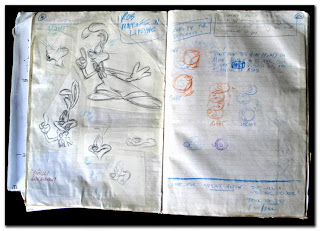Below is a brief list of stuff to get you under way. It's not a comprehensive list, and you don't have to do all of it, but tick off a few of the things on this list and you will be a making a great start on your animation career.
Buy a couple of books
First, here is a reading list to get you started. It's a short list - we've narrowed it down to two books that we recommend for all our students.
 |
| The best book on animation? |
Any serious student of animation should buy a copy of The Animator's Survival Kit, by Richard Williams. It is now the standard textbook for animators and easily the most comprehensive book available for learning animation.
Animation Methods by David Rodriguez
Animation Methods by David Rodriguez is a very useful overall guide to all the processes involved in digital animation and film-making.
It is especially good for the technical bits that the older books don't cover. It takes you through Autodesk Maya and shows you what all the tools do, and how to apply them to your animation.
Download your free copy of Maya
OK - so you've bought a book or two - what else? The next thing to do, assuming you have a laptop at home, is get yourself a free copy of Autodesk Maya 2016, and open it up. Maya is the main software we animate with, nowadays it's the industry standard.
Below is a free tutorial in the Maya tools (there are tons of similar ones) hosted at YouTube, to get you started.
Don't be daunted - just take a quick look! It does look a bit confusing at first but it's good to get familiar with the layout, and learn where the main hotkeys are, and how the interface works. You can register and get a free Maya student license here.
Start watching our free videos
Once you have done that, take a look at the week 1 videos at the website. The week 1 videos are all free and this gives you a general introduction to the medium of animation, helping you to get familiar with the language of the medium.
 |
| Fill sketchbooks! |
You've done the important stuff. However, if you have time and inclination, other useful things you can do include going to life drawing classes, and especially filling a sketch book with sketches, doodles and ideas.
Why is traditional drawing still useful?
Being able to express an idea in a simple sketch is still a very useful skill, even in the digital age.
We don't expect our students to be brilliant draftsmen, but it does help to be able to pick up a pencil and do a thumbnail sketch - even if it's a crude one. Drawing simple stick figures helps you to plan your animation.
Welcome to our course!
If you do some or all the things on this list - you will have a great head start with us on March 6th! We look forward to meeting you!
----Alex
To find out more about Animation Apprentice, click here for a link to Frequently Asked Questions. To sign up for our next classroom at Animation Apprentice, follow this link.


No comments:
Post a Comment